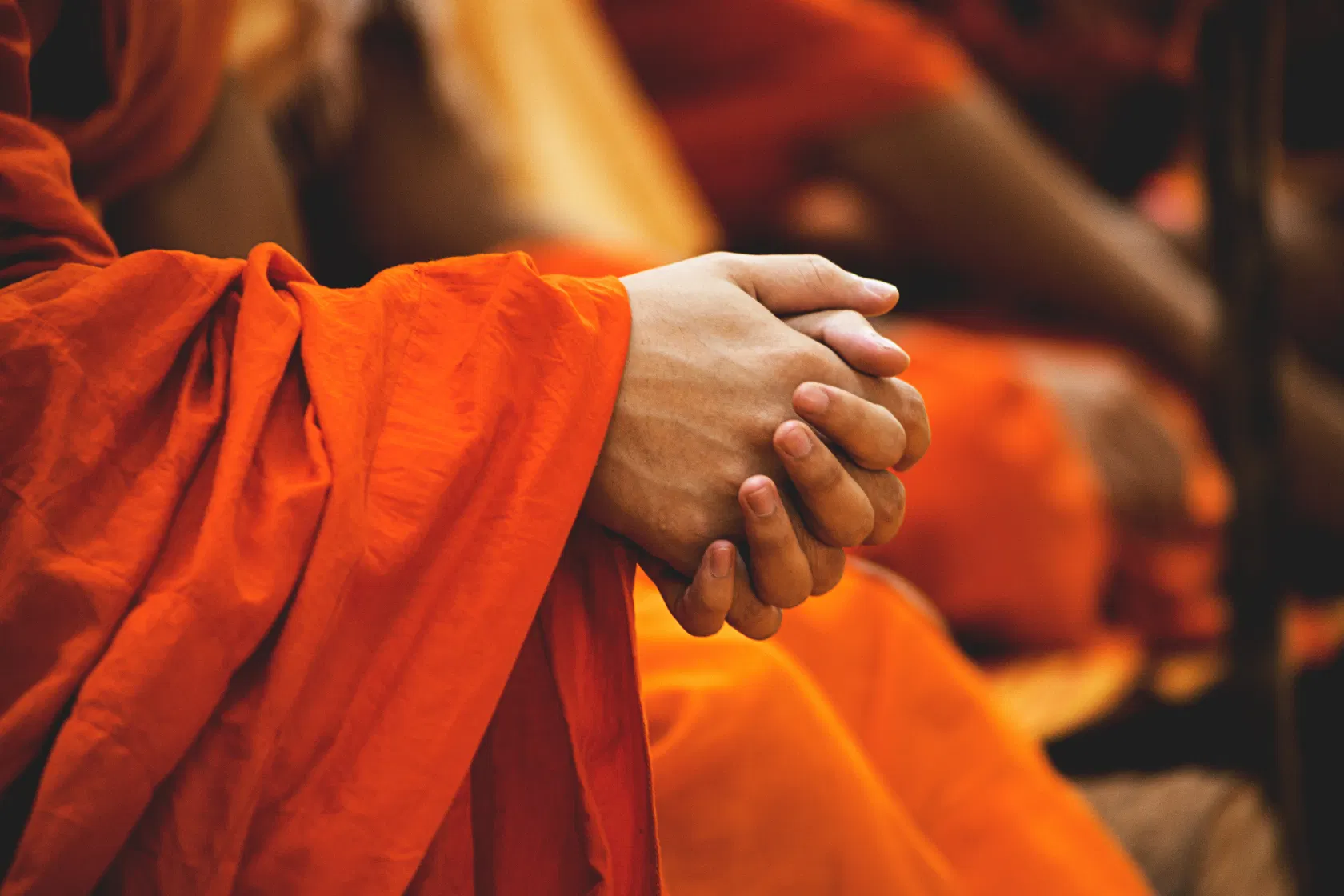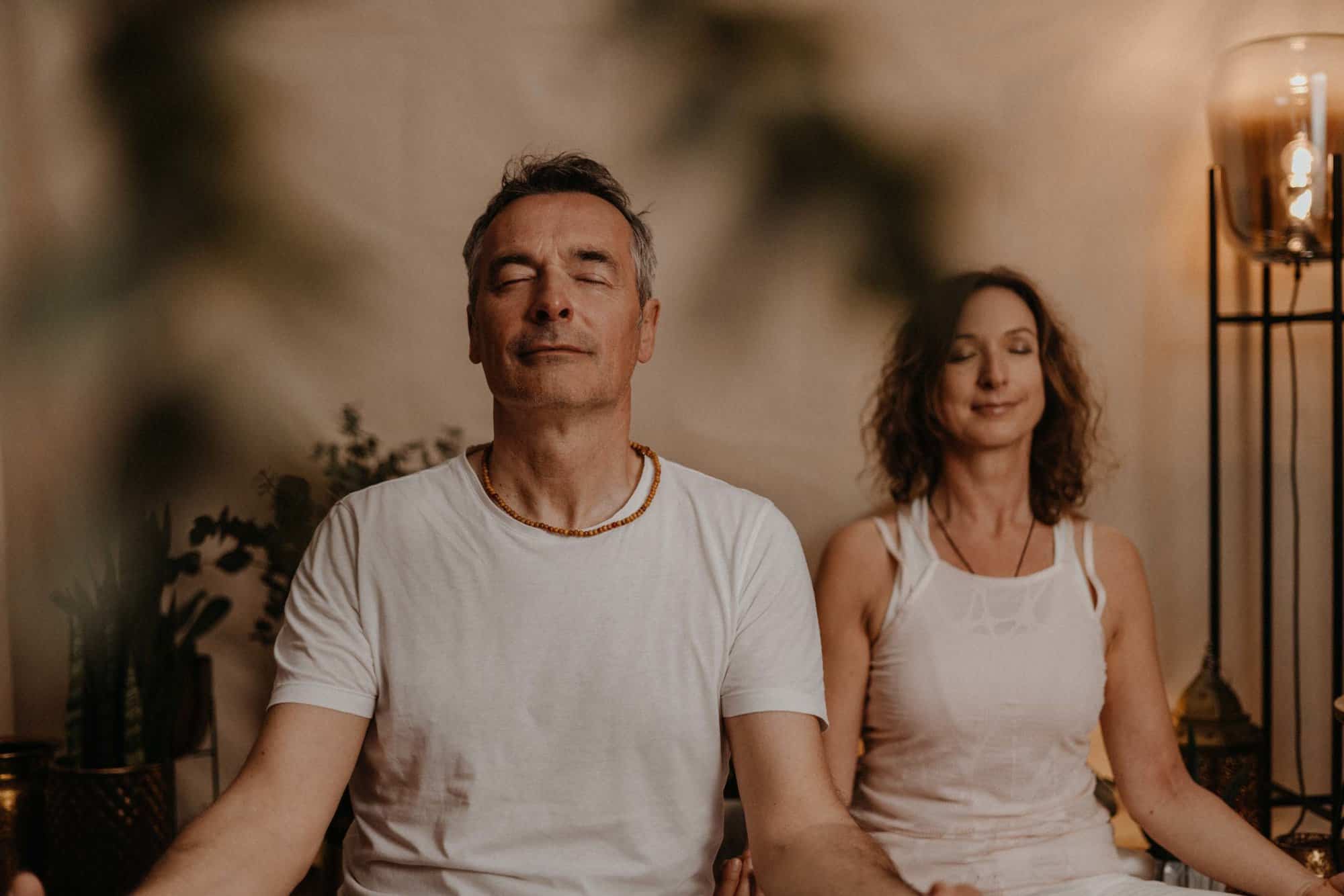To study the Way is to study oneself, to study oneself is to forget oneself. To forget oneself is to become one with all existences.
- Dōgen Zenji (teacher of Japanese Zen Buddhism, early 13th century)
Lettingworries and fears pass, giving up completely and coming to peace with mind and body - Zen practice promises nothing and yet gives much, if you are willing to practise patiently and with discipline. Here you will learn a first overview of the history of Zen and Zen meditation, which have developed over centuries in this spiritual practice.
The history and background of the cen
The term 'Zen' is derived from the Sanskrit word dhyana (Engl. 'state of meditative immersion') and refers to a current of Mahayana Buddhism. Zen Buddhism has its roots in Southeast Asia and spread and developed via Korea and Vietnam to Japan, where it finally took on its present name.
Behind Zen is the 'goal' of realising emptiness (shunyata) and non-self (anatta). The word 'goal' is under inverted commas because Zen Buddhism does not actually have a specific goal. Rather, it describes the practice and path of life that strive towards shunyata and anatta.
Zen students try to understand that the individual ego is only an illusion, and that rather everything is interconnected. Attachment to this ego (and to everything else) creates suffering (dukkha) and the release of this through meditation allows access to the fullness of life and the connection of the inner and outer worlds.
The meditation techniques
So much for the theoretical basis. Zen Buddhist practice includes 3 main exercises, the most important of which is called 'zazen'. The other two main exercises, kinhin (walking meditation) and recitation, are, so to speak, the complement to 'zazen'.
Briefly, practise with a teacher if possible, so that if any problems arise, they can be sorted out by an experienced Zen master and cannot get in the way of your Zen practice. In addition, this way you canlearn your Zen meditationfrom scratch, so that you can meditate 'properly', so to speak.
What is zazen and how is it practised?
Zazen is the heart of Zen practice, so to speak. The term comes from the Japanese(Za-, meaning 'to sit' and Zen-, meaning 'immersion'). It serves as the starting point for the other techniques and should actually eventually find its way into all areas of life.
This is how it's done - instructions on the correct Zen posture:
- If possible, cross your legs like in the lotus seat in yoga (alternatively, you can also sit in the half lotus seat, heel seat or Burmese seat).
- You can use a thick mat, a blanket or a seat cushion as a base.
- The knees should be firmly anchored in the ground.
- The back is aligned straight, the shoulders and back are completely relaxed, consciously drop your shoulders if you are often tense there.
- The head is straight, the crown of the head is pointing to the sky, the chin is slightly pulled back so that the neck is stretched and the ears are perpendicular over the shoulder.
- The left hand rests on the right, the thumbs touch lightly at the tops and form an oval that encloses the navel.
- The elbows are pointed slightly outwards and the arms are stretched so far away from the body that a fist would fit into the armpit.
- The eyes are half open, do not focus and the gaze is directed to the ground about one metre in front of the body.
- Let the breath flow naturally and gently. Count from 1-10 as you exhale. One session takes about 30 minutes. Body and mind concentrate fully on sitting and breathing. Try to let arising thoughts move on.
The balance: Kinhin
To compensate for the rigid sitting posture, Kinhin, the walking meditation, is usually practised directly after Zazen. The procedure is similar to zazen, but while walking.
- The speed can be quite different: one step per inhale and exhale, or a little more briskly (especially when practising outdoors).
- The spine is aligned straight, shoulders and back relaxed.
- The hand position (Shashu): The left fist is clasped by the right hand (when walking in the clock sense). The hands are in front of the upper body at the level of the lower sternum. The forearms form a parallel line to the floor from elbow to elbow.
- At the beginning, concentrate solely on your steps and the contact of the soles of your feet with the floor.
- As with zazen meditation, pay attention to your breath and disappear completely into your practice.
The integration of zazen into this second exercise serves to integrate meditation into more active activities than sitting. In this way, the practice can also be incorporated into everyday life at some point.
Recitation of Buddhist sutras
Sutras are the Buddhist doctrinal discourses. They are recited as a kind of chant. The aim is not to absorb the intellectual meaning of the words, but rather to merge with the surroundings through the sound of the voice and the words produced.
At the end of the recitation, 3 deep bows follow, not to praise the content of the text or the practice, but to give up the body and connect more deeply with the present moment and the environment.
When you look inside, a whole new world opens up,
and your old language becomes meaningless.
- Osho (Indian philosopher and founder of the Neo-Sannyas movement, 1931-1990)
The goal of Zen meditation
As mentioned earlier, Zen Buddhism and its practice has no immediate goal. A Zen master is reported to have once said, "I would like to offer anything to help you, but in Zen we have nothing at all." Yet it is precisely this "nothing" that is often sought.
Zen meditation helps to experience stillness and emptiness (shunyata) and to quiet the restless mind, because only a clear mind can also think clearly and recognise the true essence of things. For most of the time, what we perceive is interpreted through filters, which can lead to misinterpretations and misunderstandings.
The so-called Hishiryō is to be practised. It means 'non-thinking' and goes beyond our ordinary, categorising thinking.
One learns to recognise and question one's own thought patterns, to see blockages and to dissolve attachment to the ego and other elements of life, because according to Buddhist teachings, clinging to something creates suffering (dukkha), which needs to be released.





